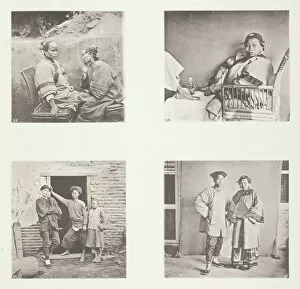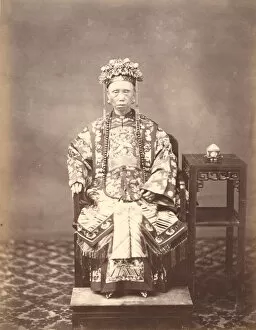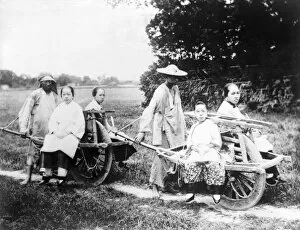Foot Binding Collection
"Foot Binding: A Painful Tradition of Chinese Women in the Early 1900s" In this captivating black and white photo from c
All Professionally Made to Order for Quick Shipping
"Foot Binding: A Painful Tradition of Chinese Women in the Early 1900s" In this captivating black and white photo from c. 1875, we catch a glimpse of the ancient practice known as foot binding. Originating in China, bound feet were considered a symbol of beauty and social status for women during that time. The image showcases Amoy women proudly displaying their small feet, achieved through years of painful manipulation and tight binding. The male counterparts can be seen donning traditional Amoy costumes, highlighting the stark contrast between gender roles in Chinese society. Engraved by J. , plate 41 from "The Costume of China, " offers us a closer look at the intricate artistry involved in foot binding. As depicted here, an elegant woman delicately embroiders while her bound feet are concealed beneath her rice-straw cloak and sandals - a testament to both tradition and sacrifice. Another engraving reveals the extent to which foot binding was practiced among Chinese women. Their deformed feet were seen as objects of desire within society's narrow standards of beauty. An intriguing poster advertising "The Living Chinese Family" in 1850 provides insight into how foot binding was not only accepted but also celebrated during that era. It depicts a woman with bound feet alongside her family members, showcasing this cultural norm without question or criticism. Moving forward, we encounter images such as "Femme du Lanxchow" from the 1870s and portraits like "Mandarin Wife" by Milton M. Miller (1861-1863). These photographs capture moments frozen in time when foot binding remained prevalent despite growing awareness about its detrimental effects on women's health. Lastly, scenes like "Culling Tea" attributed to Lai Fong (ca. 1869) and "Musicians and Flag Bearers in advance of a funeral" by M & N Hanhart (c1860) offer glimpses into everyday life where women with bound feet were an integral part of Chinese society.



















